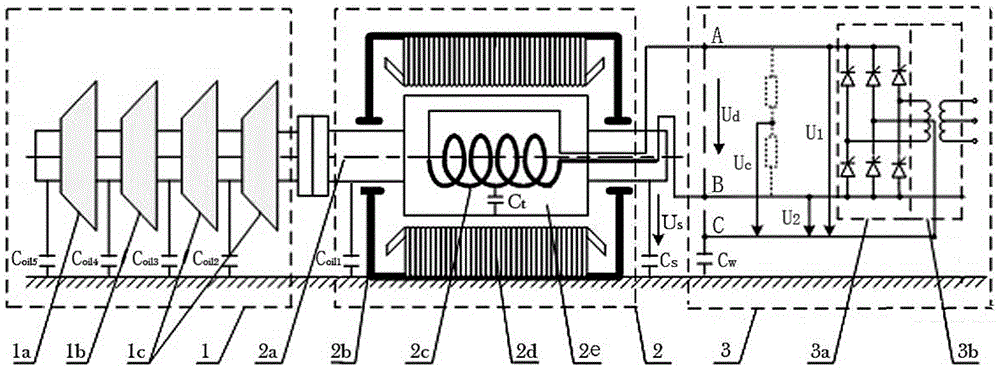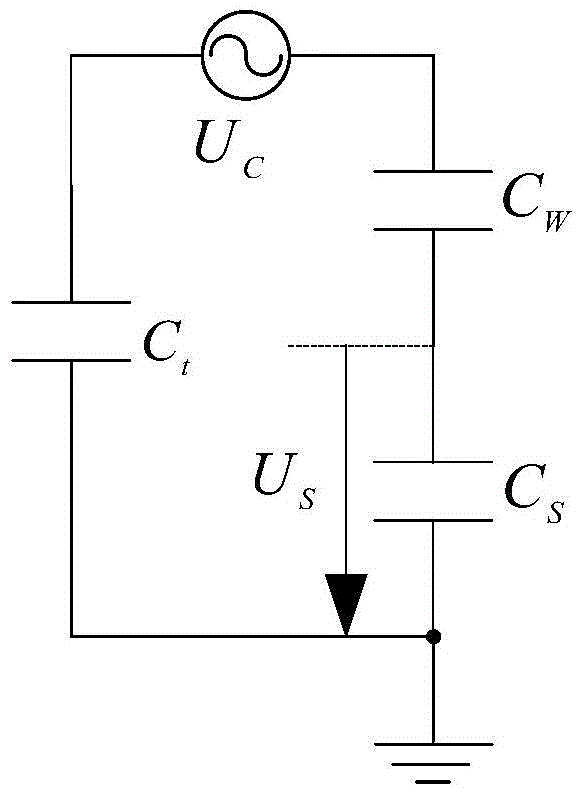Model for modeling large steam turbine generator with function of static excitation
A steam turbine generator and model technology, which is applied in electrical digital data processing, instrumentation, calculation and other directions, can solve problems such as accelerated mechanical wear, shutdown, motor component damage, etc., and achieves easy simulation analysis and research. effect achieved
- Summary
- Abstract
- Description
- Claims
- Application Information
AI Technical Summary
Problems solved by technology
Method used
Image
Examples
Embodiment Construction
[0022] The present invention will be further described below in conjunction with the accompanying drawings. The following examples are only used to illustrate the technical solution of the present invention more clearly, but not to limit the protection scope of the present invention.
[0023] Such as figure 2 As shown, the turbogenerator system includes a steam turbine 1, a generator 2, and a rectifier excitation system 3. The steam turbine 1 includes a high-pressure cylinder 1a, a medium-pressure cylinder 1b, and two low-pressure cylinders 1c; the generator 2 includes a casing 2b, a rotor Shaft 2a, rotor core 2e, excitation winding 2c, and stator 2d composed of stator core and stator winding; rectification excitation system 3 adopts a three-phase fully-controlled bridge rectification excitation system, including three-phase transformer 3b and six thyristors The three-phase fully-controlled bridge 3a uses a three-phase fully-controlled bridge rectifier to convert the three-p...
PUM
 Login to View More
Login to View More Abstract
Description
Claims
Application Information
 Login to View More
Login to View More - R&D
- Intellectual Property
- Life Sciences
- Materials
- Tech Scout
- Unparalleled Data Quality
- Higher Quality Content
- 60% Fewer Hallucinations
Browse by: Latest US Patents, China's latest patents, Technical Efficacy Thesaurus, Application Domain, Technology Topic, Popular Technical Reports.
© 2025 PatSnap. All rights reserved.Legal|Privacy policy|Modern Slavery Act Transparency Statement|Sitemap|About US| Contact US: help@patsnap.com



